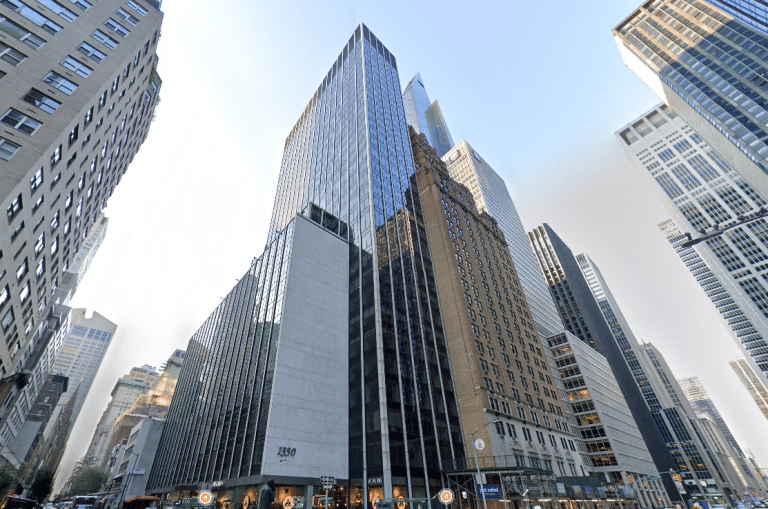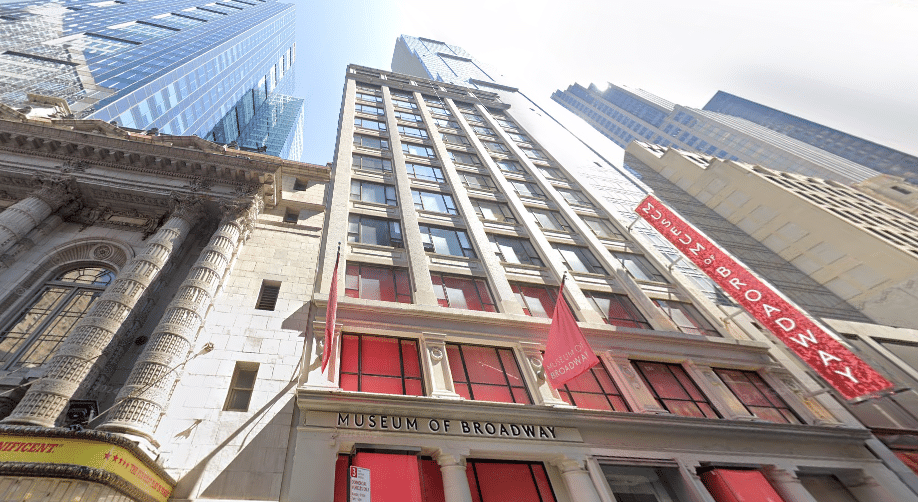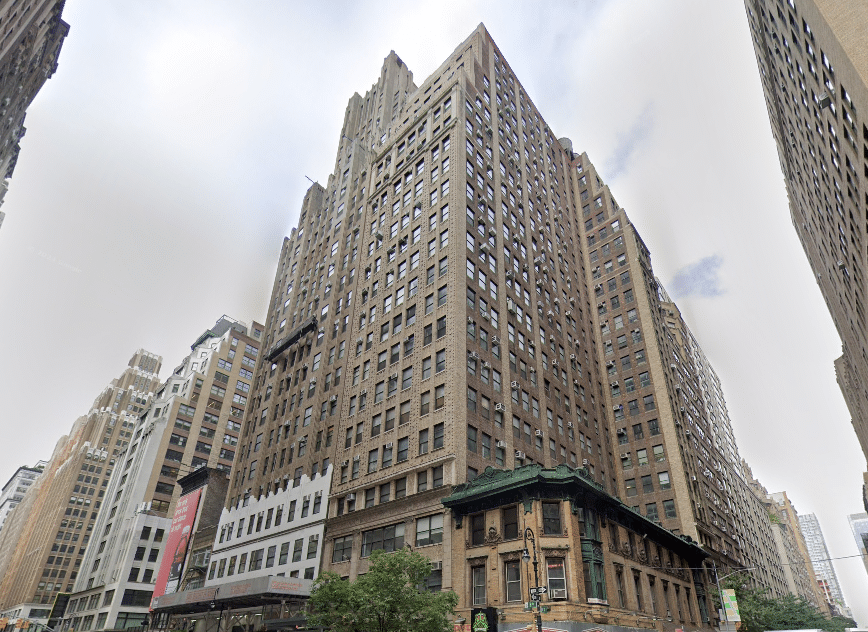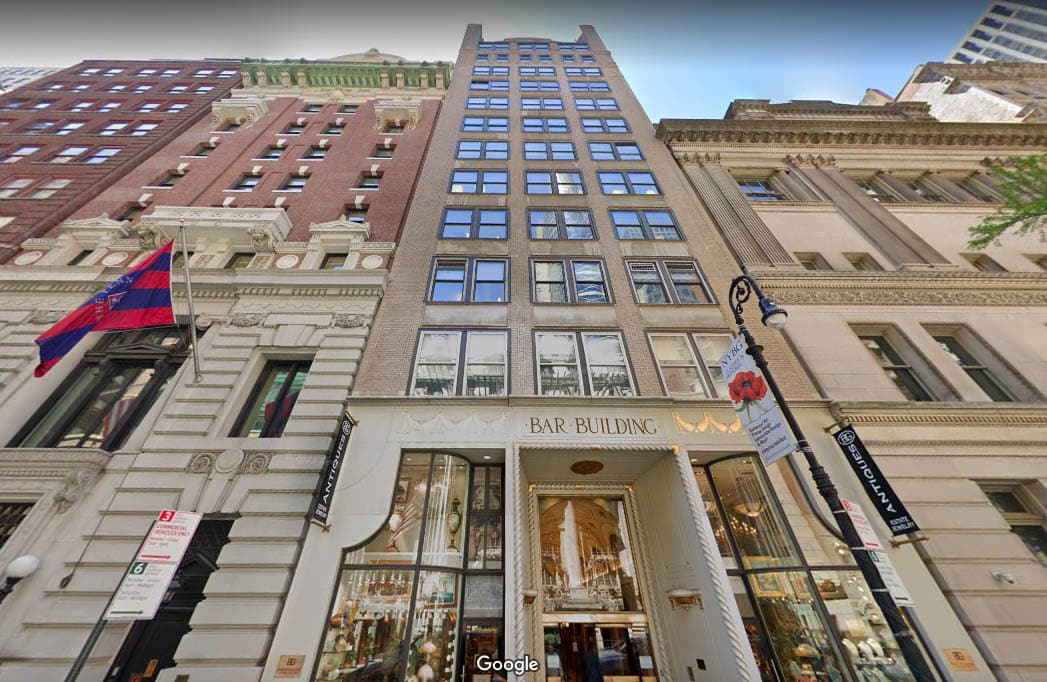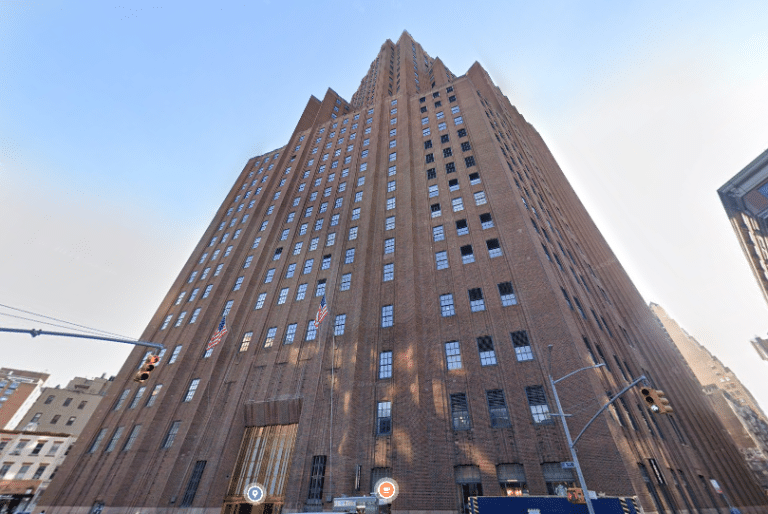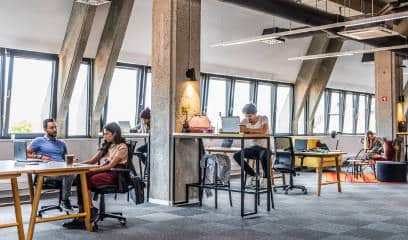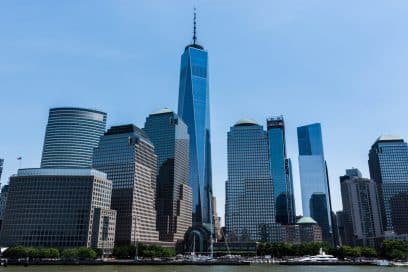If you’re running an AI company right now, chances are your inbox is flooded with real estate brokers pitching you every type of AI office space imaginable, from Brooklyn warehouses to Midtown penthouses. But here’s what they might not tell you: AI companies in New York aren’t following the usual tech startup path anymore. That ping pong table and cold brew on tap? That’s not exactly cutting it when you’ve got $50 million in funding and need to convince a senior ML researcher to choose your company over Google. We’re even seeing early-stage AI firms skip straight to Class A buildings – spaces usually reserved for hedge funds and FAANG companies.
Consider a senior data scientist your firm is recruiting. They’re weighing offers from three well-funded AI startups, and your office space could be the tiebreaker. Finding the right office as an AI company in 2024 is a unique challenge. ML teams need more than just good WiFi and standing desks. The space has to handle multiple GPU clusters without blowing a fuse while also impressing that senior engineer weighing offers from three other AI companies. And competition is getting intense, with every AI startup that just closed their Series A touring the same buildings.
You should know that the right AI office space is about something other than prestige or views (though those don’t hurt). It’s about creating an environment where teams can build something groundbreaking. The rest of this article skips the real estate jargon to focus on what matters: which buildings NYC’s AI companies are choosing, why they picked them, and most importantly – what’s working for their teams.
Finding Your AI Company’s Perfect NYC Home
First, let’s talk about buildings and neighborhoods. Right now, you’ve got some interesting choices. The big players are settling into sleek Class A buildings, which makes sense – they make an impression on clients and typically offer reliable infrastructure and connectivity to support operations, while the actual computing happens in remote data centers. But here’s a pro tip: if you’re watching your burn rate (and who isn’t?), look at other neighborhoods like the Garment District and Murray Hill – excellent access without the premium price tag.
What should be on your checklist?
- Think About Your Vibe: Be honest – are you more “suits and client meetings” (Midtown/FiDi) or “hoodies and hackathons” (SoHo/Flatiron)? Both are valid, but they send different messages to your team and clients. Your office location tells your company’s story before anyone walks through the door.
- Budget Reality Check: Class A buildings look stunning, but do you need all those amenities? Maybe you do if you host Fortune 500 clients regularly. But if your business remains in growth mode, consider whether you could better use that extra prestige spending to expand your team or improve your tech stack.
- Talent Magnet Strategy: Let’s face it – in AI, you’re only as good as your team. Want to attract top ML engineers? Being near tech hubs, universities, and innovation centers isn’t just convenient – it’s strategic. Your future star employees are probably already hanging out in these areas.
- Room to Grow: AI moves fast, and your company probably will too. Don’t just think about where you are now – think about where you’ll be in 18 months. Will that cool but cozy SoHo space still work when your team doubles? Look for areas where you can scale up without uprooting your entire operation.
Financial District and Midtown – Convenience, Prestige, and Comfort
Leading an AI company in New York City demands strategic choices, and your selection between the Financial District and Midtown will shape your company’s trajectory. These neighborhoods stand as the executive suites of NYC’s tech ecosystem, blending glass-and-steel sophistication with cutting-edge innovation. When your clients look up at your building, they’ll immediately see a powerful statement – your company’s commitment to stability, success, and market leadership.
The Financial District: AI Companies Making Strategic Moves
Walking through FiDi reveals how thoughtfully AI companies position themselves in Manhattan’s financial core. Take One World Trade Center, where Hyperscience chose the 88th floor for its 34,382-square-foot headquarters. When your AI technology handles document processing for the world’s largest banks, hosting client meetings high above the global financial hub reinforces your market position. The space works as hard as their technology does.
On two separate floors of the same tower, Celonis Inc. made an even bolder move with 75,000 square feet. Their expanding footprint reflects a clear vision: create room for rapid growth while giving their enterprise clients and growing team the environment they expect from a market leader.
Down at 101 Greenwich Street, Ocrolus demonstrates similar strategic thinking. Their 18,522-square-foot space puts their financial AI technology right where their clients make critical decisions. Such proximity to the action turns everyday client interactions into opportunities while drawing talent who understand the value of developing AI solutions at the heart of the financial world.
Midtown: Where Healthcare AI and Business Intelligence Converge
Midtown’s transformation into an AI hub tells an equally compelling story through its tenants. At 11 Times Square, Paige AI turned its search for 24,132 square feet into an opportunity to reshape healthcare AI’s presence in Manhattan. Their location creates a natural bridge between the medical corridor from NYU Langone to Columbia Presbyterian, putting them at the center of the healthcare innovation they drive. Medical professionals and AI researchers can seamlessly flow between hospitals, labs, and Paige’s offices, turning potential collaboration into reality.
Over at 1359 Broadway, Sisense took a different but equally strategic approach with its 24,169-square-foot headquarters. Its location in the revitalized Garment District places its business intelligence platform where old and new New York intersect. Traditional enterprises undergoing digital transformation can step into Sisense’s modern space and immediately understand how AI fits into their future. The area’s evolution from fashion manufacturing to technology innovation mirrors its mission of transforming business data into actionable intelligence.
Midtown East and Murray Hill – Balance of Prestige and Accessibility
Suppose you need a space where your brilliant engineers won’t dread the commute, your sales team can smoothly hop between client meetings, and your address turns heads on Zoom calls. Here’s a real estate strategy that actually makes sense for your AI company- consider Midtown East and Murray Hill to balance practicality and polish.
Midtown East – Where Business Gets Done
Take Talkwalker Inc.‘s recent move to 711 3rd Avenue. When they signed for 6,516 square feet last June, they weren’t just renting space but buying into an ecosystem. Their team analyzes social media with AI by day and can grab world-class sushi by night. The partial second floor gives them room to breathe without paying for unused space and trust us; your CFO will thank you for that kind of thinking.
Think of Midtown East as that perfect “just right” spot. Your team rolls in through Grand Central, maybe grabbing their morning coffee at Great Northern before heading up to the office. The Third Avenue towers in the 50s aren’t just pretty faces – they’re packed with a high level of amenities such as restaurants, outdoor space, and gyms. And when that brilliant ML researcher you’re recruiting asks “where’s the office?” – telling them “Third Avenue by Grand Central” just sounds different. Just remember to check the power capacity if you’re planning to run serious computing hardware.
Murray Hill – Tech’s New Home Base
Speaking of smart moves, let’s look at what EliseAI did at 33 E 33rd Street. In late 2021, they scooped up 30,282 square feet across multiple floors, and here’s why that matters: They got the Class A space they needed without the Midtown price tag. Their conversational AI team gets to work in a neighborhood that feels more “tech startup” than “stuffy corporate,” but they can still hop on the 6 train and be at a client meeting in 10 minutes.
Murray Hill has this wonderful split personality—professional enough to impress the board members but casual enough that your developers can walk to their favorite food trucks. It’s become a magnet for AI companies because it just makes sense: good space, better prices, and a vibe that says, “We’re serious about our work, but we don’t take ourselves too seriously.”
Think about your team for a minute. Your senior architect might love that she can grab a quick coffee with other techies in the area. Your sales lead will appreciate dashing between meetings without losing half his day to travel. And when you’re in growth mode? Having other tech companies nearby creates a talent pool you’ll be glad to tap into.
SoHo, NoMad, and Flatiron – Creative, Tech-Centric Districts
Picture walking through streets where Instagram influencers dodge tech entrepreneurs rushing to their next meeting – that’s the daily theater of SoHo, NoMad, and Flatiron. These neighborhoods have come a long way from their industrial roots, transforming into something uniquely New York: spaces where cutting-edge AI companies thrive alongside vintage boutiques and artisanal cafes.
SoHo and NoMad – Blending Creativity with Innovation
There’s something magical about setting up shop in a building where artists once created masterpieces in illegal lofts. Take Qloo at 100 Crosby Street, tapping into SoHo’s creative pulse. Those famous cast-iron facades and soaring ceilings aren’t just architectural eye candy. They’re backdrops where data scientists and designers collaborate over cold brew, and your AI engineers might find inspiration in the same light that once illuminated artists’ studios.
Yes, you’ll pay a premium for these neighborhoods. But when your potential hires step out for lunch, they’ll find the creative energy intoxicating. They’re the kind of lifestyle benefits that make top talent choose one job offer over another.
Flatiron District – Historic Center for Tech Innovation
The Flatiron District has become tech’s worst-kept secret, and for good reason. Just look at Remesh’s setup at 60 Madison Avenue – they scored 5,537 square feet of prime real estate back in May 2020, right when everyone questioned office space’s future.
This neighborhood feels different. It could be the shadow of the iconic Flatiron Building or the startup buzz spilling out of the Ace Hotel lobby. Your team can bounce from Madison Square Park’s shake shack for lunch to General Assembly events after hours. The streets practically hum with the energy of people building the future, surrounded by some of the city’s most beautiful architecture.
Final Words
New York’s AI industry has always reflected its resource-intensive nature. From the beginning, AI companies required significant capital investment, employing costly teams of Ph.D.s, machine learning experts, and data scientists. Even in their early stages, these companies gravitated toward premium office spaces to accommodate their high-end computing infrastructure and attract top talent. Today, this pattern continues as AI firms command entire floors in Manhattan’s most prestigious towers, their sleek offices humming with GPU clusters where mailrooms once stood. Such evolution reflects a deeper truth – creating spaces where brilliant minds can tackle humanity’s biggest challenges requires thoughtful investment.
For founders charting their course in AI, your office space tells the story of your vision for the future. Perhaps you’ll feel called to the energy of Flatiron or to the commanding views from FiDi that remind your team they’re building something truly significant. Location choices impact every aspect of your company and planting your flag means choosing soil where the next big breakthroughs will take root. Choose wisely, dream big, and remember to check your building’s power outlets and tech capabilities.







